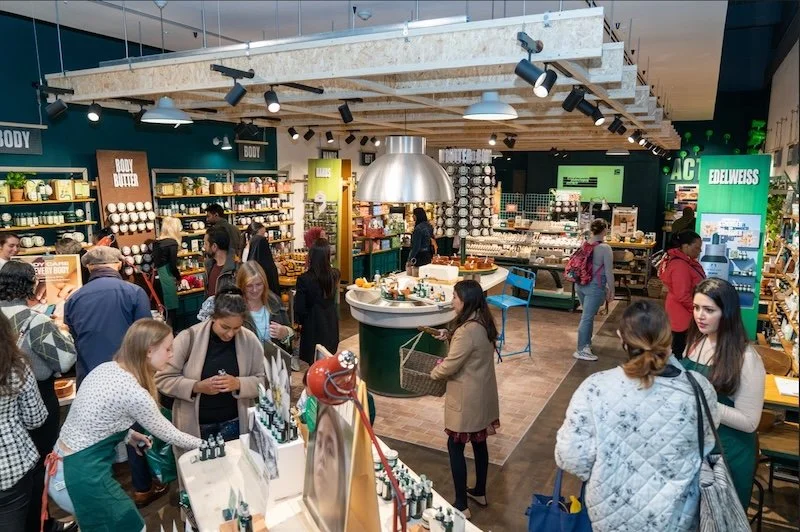Five best uses of social media for retailers in 2019
By Cin-Yee Ho, Director of Sales & Marketing EMEA, HiMirror
While social media has developed into a powerful asset for business, it can be tricky for retailers, big and small, to navigate the maze of social media. While many big brands will have the resource, talent and budget to effectively utilise social media to drive sales and create brand awareness, it can be difficult for smaller retailers to discover what tools will work for their individual brand. Here we take a look at five key strategies for using social media in 2019.
To pay or not to pay
With big name brands now fully aware of the massive potential value of social media when it comes to engaging with customers, it’s no surprise that money is being poured into social media advertising budgets. While paid ads are more prevalent than ever when users are scrolling through platforms, they are not the be all and end all for attracting consumers.
Instead retailers should invest in high quality content that fits their brand image and personality; this is key for developing a solid base from which to employ a social media strategy and any future campaigns. Constructing a thorough strategy that defines goals, metrics and target audiences should be the first step for retailers to create engaging content.
Sharpening your story skills
As seen on Instagram, Facebook and Snapchat, Stories have increased rapidly in popularity among social media users. Ideal for interaction with customers using smartphones thanks to their easy access and simple concept, Stories have become a crucial avenue for brands to share content and engage with their customer base.
Smaller retailers should start experimenting with Stories; from trying out AR and custom GIFs, to using the Stories Highlights feature, there’s plenty of engaging and customisable assets that allows a brand to have fun when interacting with consumers. Stories is yet to really take off on Facebook, but the company is heavily investing in its development so retailers should get in early to capitalise on its expected forthcoming popularity.
The commerce challenge
It’s now easier than ever for retailers to introduce e-commerce to their social channels. Brands can show-off their products through traditional social media platforms as well the increasing variety of features. Many retailers have found that ‘Swipe up for more information’ buttons often are more powerful than ‘buy’ buttons in enticing customers to interact with the brand on the platform.
However, Instagram has made great strides in developing shoppable Instagram posts which allows users to buy products from a brand’s post without having to leave the app. Retailers should think carefully about the value of integrating e-commerce with their social media channels for their individual brand; if done clumsily, it can be a distraction and put off consumers. However, there is potential for huge reward as well with consumers always looking for convenience as well as potentially getting a leg up on competitors.
Trust is key
Consumer concerns around privacy, trust and authenticity in social media came to a head last year with the Facebook Cambridge Analytica scandal. While big name companies like Twitter have made efforts to clamp down on fraudulent accounts and fake follower numbers in recent months, and there are new transparency rules on product promotion for influencers, brands are still battling for consumer trust.
With users more wary than ever of what they see on social media platforms, brands must become more ‘human’ to prove their value. Retailers must ensure any strategy caters for authenticity; to build trust and gain a loyal following, brands must think about how they can deliver the authentic, genuine and interesting content that consumers want and demand.
The influencer generation
Following on from delivering authentic content, retailers can also capitalise on the popularity of influencers to help them improve consumer engagement. However, with stricter regulations from the Advertising Standards Authority (ASA), influencers are now forced to make it clear when they are promoting or have been gifted a product.
Therefore, retailers must carefully consider who they choose to promote their brand. Many are now opting to work with ‘micro’ influencers; those who have a smaller number of followers but have a loyal audience and who can work with the retailer to create engaging, intimate and meaningful content that appeals to the retailer’s target audience.
Successful engagement
Social media has become an important asset to retail strategy and is helping retailers increase brand awareness and drive customer sales. Navigating through the plethora of tools and strategies can be difficult but retailers must remember to choose the features and channels which suit their brand.
Brands should market with creativity and caution as they compete for attention amongst consumers who are demanding more value in exchange for their time. So when it comes to a social media strategy, retailers should aim at deploying the right voice and the right tools to fit in with their brand’s identity.










Continue reading…